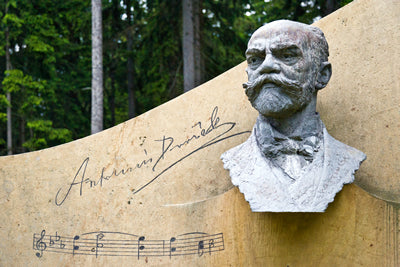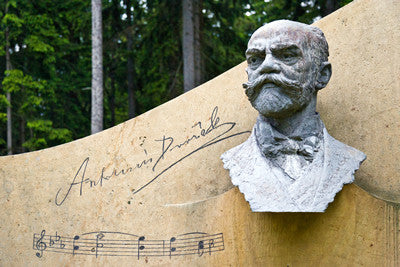 Nicknamed the “American Quartet”, Antonin Dvorak wrote this in the summer of 1893 in Spillville, Iowa. He was on vacation with his family from his position as director at the National Conservatory of Music of America in New York City. Spillville being a Czech immigrant community at that time, Dvorak found it to be home away from home.
Nicknamed the “American Quartet”, Antonin Dvorak wrote this in the summer of 1893 in Spillville, Iowa. He was on vacation with his family from his position as director at the National Conservatory of Music of America in New York City. Spillville being a Czech immigrant community at that time, Dvorak found it to be home away from home.
Throughout the first movement you will hear gypsy and Czech melodies through the dense harmonies and breathtaking tempo and color changes.
In the second movement you will hear how Dvorak interprets Negro spiritual and Native American tunes into a very simple melody which develops in the later half to a powerful and dramatic and powerful ending.
The third movement is a traditional scherzo form (ABABA), a fast and humorous composition which is usually part of a four movement piece. Dvorak brings in several syncopated tunes and you will also hear the scarlet tanager which is a song bird native to Iowa in the spring and summer of North America.
The finale is in the form of a traditional rondo (ABACABA), a musical form with a recurring theme. He starts with a pentatonic melody; then Dvorak re-continues the lyrical theme from the beginning of the movement throughout the B section and ends it with a chorale motive in the C section.
It took Dvorak 3 days to sketch out the piece and another 13 days to finish it. When completing the work he wrote on the front page “Thank God! I am content. It was fast.” Thus ending his second attempt at writing a quartet in F Major which is one of the most influential pieces and what is now considered one of most popular in chamber music repertoire.



Leave a comment